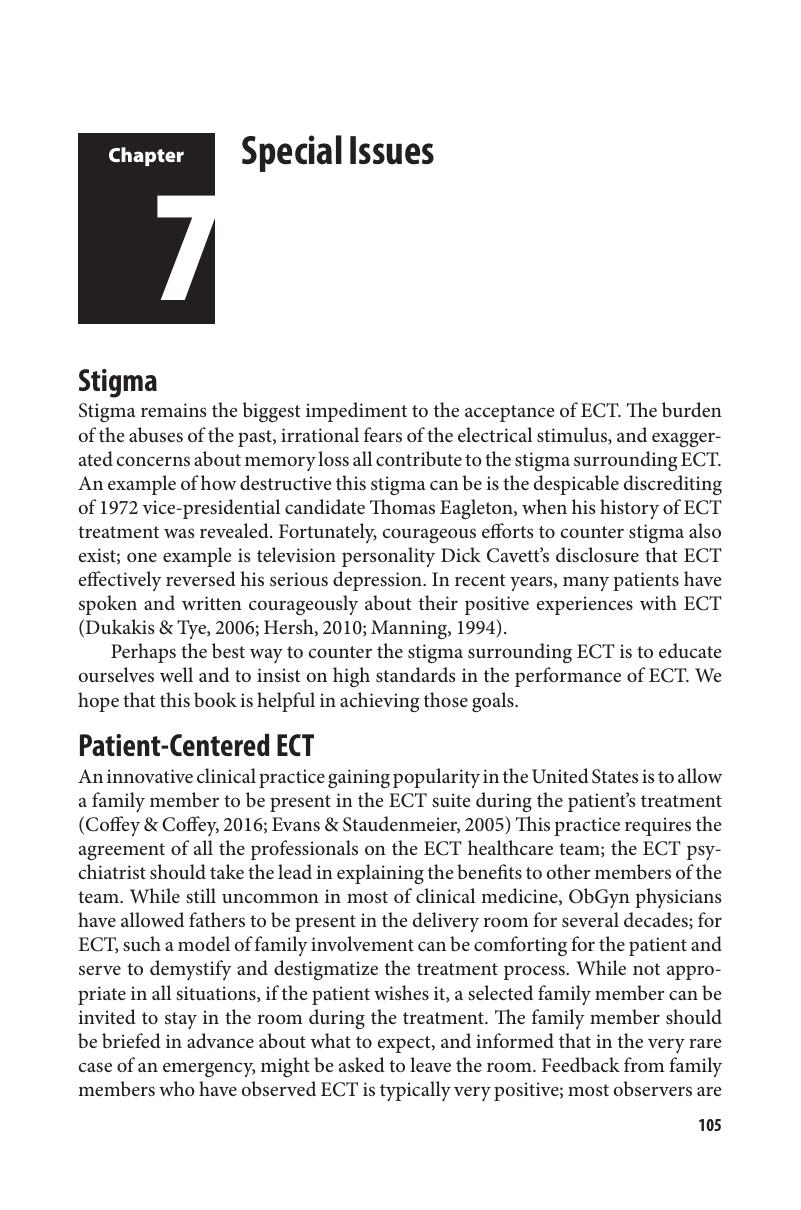Book contents
- Handbook of ECT
- Handbook of ECT
- Copyright page
- Dedication
- Contents
- Preface
- Abbreviations
- Chapter 1 Basic Concepts of ECT
- Chapter 2 ECT: Patient Selection and Preparation
- Chapter 3 ECT Technique
- Chapter 4 ECT Treatment Course
- Chapter 5 Common Adverse Effects
- Chapter 6 The ECT Service
- Chapter 7 Special Issues
- Index
- References
Chapter 7 - Special Issues
Published online by Cambridge University Press: 17 December 2018
- Handbook of ECT
- Handbook of ECT
- Copyright page
- Dedication
- Contents
- Preface
- Abbreviations
- Chapter 1 Basic Concepts of ECT
- Chapter 2 ECT: Patient Selection and Preparation
- Chapter 3 ECT Technique
- Chapter 4 ECT Treatment Course
- Chapter 5 Common Adverse Effects
- Chapter 6 The ECT Service
- Chapter 7 Special Issues
- Index
- References
Summary

- Type
- Chapter
- Information
- Handbook of ECTA Guide to Electroconvulsive Therapy for Practitioners, pp. 105 - 108Publisher: Cambridge University PressPrint publication year: 2018

